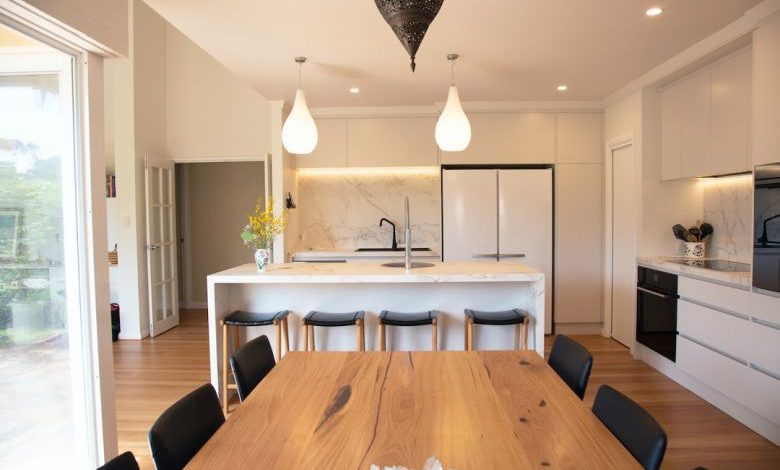How to Choose the Right Lighting for My Kitchen?

Lighting plays a crucial role in any kitchen, not only for illuminating the space but also for creating the right ambiance. The right lighting can enhance the functionality and aesthetics of your kitchen, making it a more pleasant and enjoyable space to cook and entertain. With so many options available, choosing the right lighting for your kitchen can be a daunting task. In this article, we will guide you through the process of selecting the perfect lighting for your kitchen.
Assess Your Kitchen’s Lighting Needs
Before diving into the world of lighting fixtures, it’s important to assess your kitchen’s lighting needs. Consider the size and layout of your kitchen, as well as the activities that take place there. Does your kitchen have a central island that requires task lighting? Do you have any areas that need accent lighting to highlight specific features? Understanding your specific lighting needs will help you determine the types of fixtures and placement that will work best for your kitchen.
Consider Natural Light
One key factor to consider when choosing kitchen lighting is the amount of natural light your kitchen receives. Natural light is not only energy-efficient but also provides a warm and inviting atmosphere. If your kitchen receives ample natural light during the day, you may be able to rely on it as the primary source of lighting and use fixtures to supplement it during the evenings. On the other hand, if your kitchen lacks natural light, you’ll need to focus on choosing fixtures that can adequately brighten the space.
Choose the Right Fixture Types
Now that you have assessed your kitchen’s lighting needs, it’s time to explore the different types of fixtures available. There are three main types of lighting fixtures to consider: ambient, task, and accent lighting.
Ambient lighting provides overall illumination for the entire space. It can be achieved through ceiling-mounted fixtures such as chandeliers, recessed lights, or track lighting. When selecting ambient lighting, consider the size and height of your kitchen. For smaller kitchens, recessed lights or flush-mounted fixtures may be a better option to avoid overwhelming the space.
Task lighting is essential for specific work areas such as countertops, islands, or stovetops. Under-cabinet lighting, pendant lights, or adjustable track lighting are popular choices for task lighting. When choosing task lighting, make sure the fixtures are bright enough to provide adequate illumination for the specific tasks performed in those areas.
Accent lighting adds visual interest and highlights specific features in your kitchen. This can be achieved through the use of spotlights, strip lights, or LED tape lights. Accent lighting can be used to showcase artwork, architectural elements, or decorative pieces in your kitchen. When selecting accent lighting, consider the mood you want to create and choose fixtures that complement the overall style of your kitchen.
Pay Attention to Light Bulbs
Choosing the right light bulbs can greatly impact the quality and color of light in your kitchen. LED bulbs are a popular choice due to their energy efficiency and longevity. They come in a variety of color temperatures, ranging from warm white to cool white. Warm white bulbs (around 2700-3000 Kelvin) create a cozy and inviting atmosphere, while cool white bulbs (around 4000-5000 Kelvin) provide a brighter and more energizing light. Experiment with different bulb types and color temperatures to find the perfect combination for your kitchen.
Experiment with Lighting Layers
To create a well-lit and visually appealing kitchen, consider incorporating multiple layers of lighting. By combining ambient, task, and accent lighting, you can create depth and dimension in your kitchen. For example, you can install recessed lights for ambient lighting, pendant lights for task lighting over the island, and under-cabinet lights for accent lighting. This layered approach allows you to adjust the lighting according to your needs and create different atmospheres for various occasions.
Incorporate Dimmers and Smart Lighting
Lastly, consider incorporating dimmers and smart lighting into your kitchen. Dimmers allow you to adjust the intensity of the lights, providing flexibility and ambiance control. Smart lighting systems can be controlled through a smartphone or voice commands, allowing you to easily change the lighting settings without even getting up. These features not only enhance the functionality of your kitchen but also add a touch of modernity and convenience.
In conclusion, choosing the right lighting for your kitchen requires careful consideration of your kitchen’s lighting needs, natural light availability, fixture types, light bulbs, and the integration of multiple layers of lighting. By following these guidelines and experimenting with different options, you can create a well-lit and visually stunning kitchen that perfectly suits your needs and style. So, go ahead and illuminate your kitchen with the right lighting!




